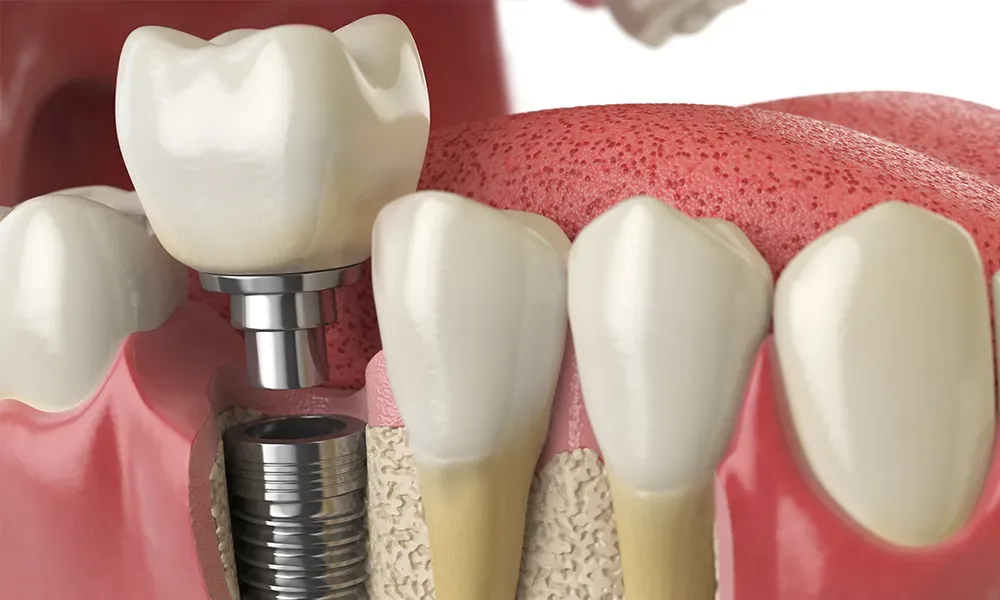Dental implants have revolutionized the field of dentistry, offering a permanent solution for missing teeth. With various types and materials available at the Dacula Family Dentistry, selecting the right option can be overwhelming. In this article, we’ll delve into the different types of dental implants and materials used, to help you make informed decisions for your oral health.
What are dental implants?
A dental implant is a surgically placed artificial tooth root made of titanium or zirconia, designed to support a replacement tooth or bridge. It is a small, screw-shaped fixture that is inserted into the jawbone, where it integrates with the surrounding bone and tissue, providing a sturdy anchor for a prosthetic tooth.
Dental implants are a popular solution for individuals with missing teeth, offering a natural-looking and functioning alternative to traditional dentures or bridges. By mimicking the natural tooth root, dental implants help preserve the surrounding bone and tissue, maintaining facial structure and promoting overall oral health. With proper care and maintenance, dental implants can last for decades, providing a long-term solution for tooth loss.
What are the types of dental implants?
Here are the main types of dental implants:
Endosteal Implants: Placed directly into the jawbone, these are the most common type of implant.
Subperiosteal Implants: Placed under the gum tissue but above the jawbone, these are ideal for patients with insufficient bone density.
Mini Implants: Smaller than traditional implants, these are used for temporary or transitional purposes.
All-on-4 Implants: A full-arch restoration using four implants, ideal for patients with multiple missing teeth.
Zirconia Implants: Made from zirconium dioxide, these offer a metal-free alternative.
Single-Stage Implants: Placed in a single procedure, these have a built-in abutment.
Two-Stage Implants: Placed in two procedures, these allow for healing time before attaching the abutment.
Immediate Load Implants: Placed and restored in a single procedure, these offer immediate results.
Basal Implants: Placed in the basal bone, these are ideal for patients with limited bone availability.
Pterygoid Implants: Placed in the pterygoid bone, these are used for patients with severe bone loss.

What are the materials used in dental implants?
Here are the common materials used in dental implants:
Titanium: Most commonly used due to its strength, durability, and biocompatibility.
Zirconia: A metal-free alternative, offering excellent aesthetics and strength.
Stainless Steel: Used in some mini implants, offering a cost-effective option.
Ceramic: Used in some implant crowns, offering a natural appearance.
Gold: Used in some implant components, offering excellent biocompatibility and corrosion resistance.
Nickel-Chromium: Used in some implant frameworks, offering strength and durability.
Cobalt-Chromium: Used in some implant frameworks, offering strength and durability.
Titanium Alloy: A combination of titanium and other metals, offering enhanced strength and durability.
Zirconium Oxide: Used in some implant frameworks, offering strength and durability.
Bioactive Materials: Such as hydroxyapatite and tricalcium phosphate, are used to enhance bone integration.
These materials are used in various components of dental implants, including:
- Implant body
- Abutment
- Crown
- Framework
- Screw
The choice of material depends on the specific needs of the patient, the location of the implant, and the desired aesthetic outcome.
What do surface treatments and coatings for dental implants involve?
This can include:
Sandblasting: Creating micro-scratches on the surface to increase roughness and promote bone attachment.
Etching: Using acid to create micro-pits and increase surface area for bone integration.
Hydroxyapatite (HA) coating: Applying a layer of HA, a natural mineral found in bone, to enhance bone integration.
Titanium plasma spray: Creating a porous surface by spraying titanium particles onto the implant.
Anodization: Increasing the thickness of the titanium oxide layer to enhance corrosion resistance.
Blasted and etched surface: Combining sandblasting and etching for a rougher surface.
Nano-surface treatment: Creating a nano-rough surface to enhance protein adsorption and bone integration.
Bioactive coatings: Applying coatings that release bioactive molecules to enhance bone integration.
Consult your dentist to determine the best option for your specific needs for improved oral health and rehabilitation.










